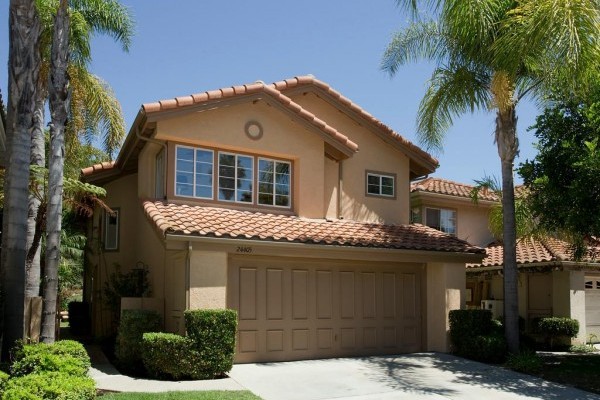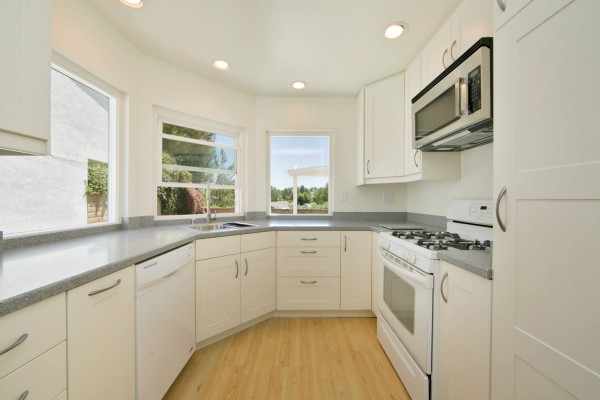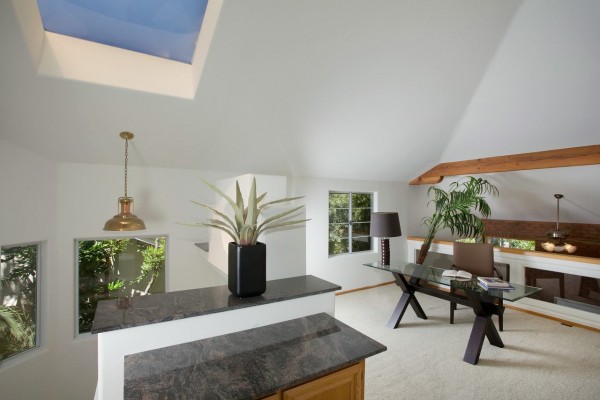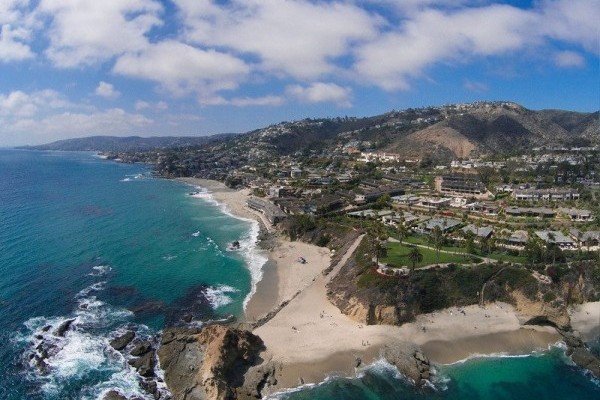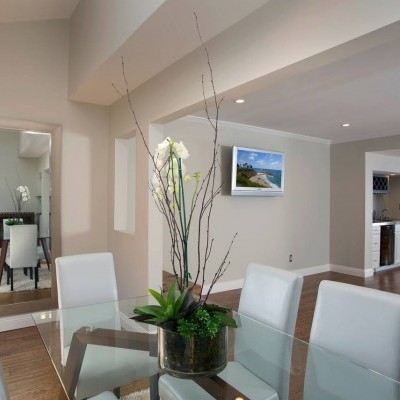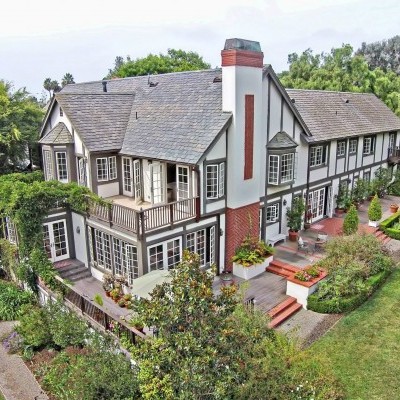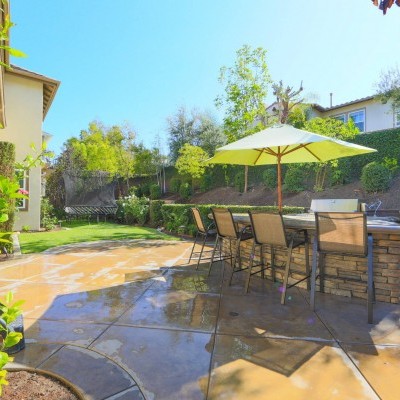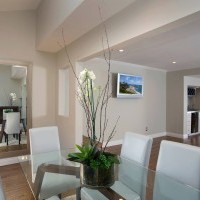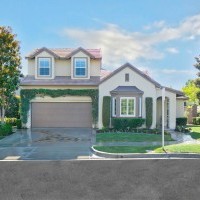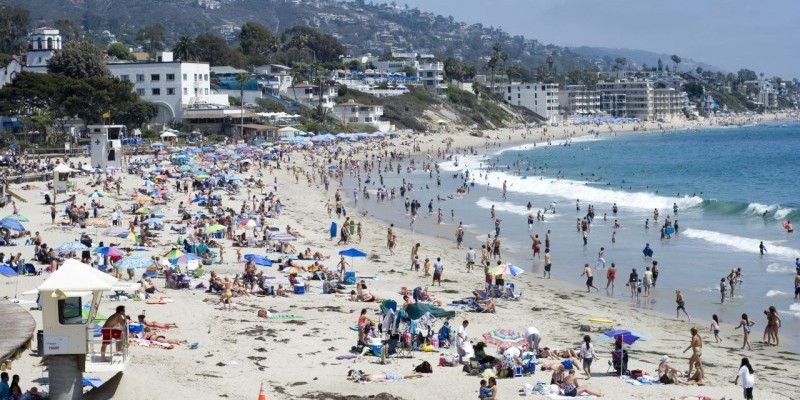
LAGUNA BEACH CA
Date: 09/26/2015
Laguna Beach is a seaside resort city located in southern Orange County, California, United States, approximately 19 miles (31 km) southeast of the county seat of Santa Ana. Laguna Beach is known for its mild year-round climate, scenic beaches, coves, and artist community. The population in the 2010 census was 22,723.
Historically a territory of paleoindians, the Tongva people and then Mexico, the location became part of the United States following the Mexican%uFFFDAmerican War. Laguna Beach was settled in the 1870s, officially founded in 1887 and, in 1927 its current government was incorporated as a city. In 1944, the city adopted a council-manager form for its government. The city has remained relatively isolated from urban encroachment by its surrounding hills, limited highway access, and a dedicated greenbelt. 5.88 miles (9.46 km) of the Laguna Beach coastline are protected by a state marine reserve and an additional 1.21 miles (1.95 km) are designated as a state conservation area.
Tourism is the primary industry with an estimated three million people visiting the community annually. Annual large events include the Pageant of the Masters, Festival of the Arts, Sawdust Festival, Art-A-Fair, and Kelpfest.
History
Laguna Beach was the habitation site of a prehistoric paleoindian civilization. In 1933, the first fossilized skull of a paleoindian found in California was uncovered during construction on St. Ann's Drive. Known as "Laguna Woman", the skull originally was radiocarbon dated to more than 17,000 BP, however, revised measurements suggest it originated during the Holocene era 11,700 years before present. Subsequent research has found several prehistoric encampment sites in the area.
Historically, the indigenous people of the Laguna Beach area were the Tongva. Aliso Creek served as a territorial boundary between Gabrieleno and Acjachemen groups, or Juanenos, named by Spanish missionaries who first encountered them in the 1500s. The area of Laguna Canyon was named on an 1841 Mexican land grant map as, Ca%uFFFDada de las Lagunas (English:Glen of the Lagoons). After the Mexican-American War ended in 1848, the area of Alta California was ceded to the United States. The treaty provided that Mexican land grants be honored and Rancho San Joaquin, which included north Laguna Beach, was granted to Jos%uFFFD Antonio Andres Sep%uFFFDlveda. Following a drought in 1864, Sep%uFFFDlveda sold the property to James Irvine. The majority of Laguna Beach was one of the few parcels of coastal land in Southern California that never was included in any Mexican land grant.
Settlers arrived after the American Civil War. They were encouraged by the Homestead Act and Timber Culture Act, which granted up to 160 acres of land to a homesteader who would plant at least 40 acres of trees. In Laguna Beach, settlers planted groves of eucalyptus trees. In 1871, the first permanent homestead in the area was occupied by the George and Sarah Thurston family of Utah on 152 acres of Aliso Creek Canyon. In 1876, the brothers William and Lorenzo Nathan "Nate" Brooks purchased tracts of land in Bluebird Canyon at present-day Diamond Street. They subdivided their land, built homes and initiated the small community of Arch Beach. In his book, History of Orange County, California (1921), Samuel Armor cited permanent homestead of Nate Brooks as the beginning of the modern day town and described Brooks as the "Father of Laguna Beach."
The community in Laguna Canyon and around the main beach expanded during the 1880s. The city officially founded a post office in 1887 under the name Lagona (sic), but the postmaster in 1904, Nicholas Isch, successfully petitioned for a name correction to Laguna Beach. By then Laguna Beach already had developed into a tourist destination. Hubbard Goff built a large hotel at Arch Beach in 1886, which later was moved and added to Joseph Yoch's Laguna Beach Hotel built in 1888 on the main beach. Visitors from local cities pitched tents on the beaches for vacation during the warm summers.
The scenic beauty of the isolated coastline and hills attracted plein-air painters in the early 1900s. William Wendt, Frank Cuprien, and Edgar Payne among others settled there and formed the Laguna Beach Art Association. The first art gallery opened in 1918 and later became the Laguna Beach Art Museum. Precursors to The Festival of the Arts and the Pageant of the Masters began in 1921, and eventually were established in their present day form by Roy Ropp in 1936. Due to its proximity to Hollywood, Laguna also became a favorite filming location. Starting in 1913, dozens of silent films were made at local coves with Harold Lloyd, Mary Pickford, Douglas Fairbanks, Jr., and others. Actors and film crews stayed during long production shoots at the Arch Beach Tavern on the hillside above Moss Street.
The arrival of painters, photographers, filmmakers, and writers established Laguna Beach as a noted artist community. Although there only were approximately 300 residents in 1920, a large proportion of them worked in creative fields. The small town remained isolated until 1926 because the long winding Laguna Canyon road served as the only access. With the completion of the Pacific Coast Highway in 1926, a population boom was expected. In order to protect the small town atmosphere of the art colony, residents who called themselves "Lagunatics" pushed for incorporation. The municipal government for Laguna Beach incorporated as a city on June 29, 1927. The city experienced steady population growth since that time, rising from 1900 residents in 1927 to more than 10,000 in 1962, and becoming four times larger in area.
Three Arch Bay, a exclusive 29 acre private community located in south Laguna Beach, originally sold, in 1926 for $135,000.00 features homes with oceanside swimming pool's built into the rocks. The first rock pool, originally created in 1929 by Film producer Edward H. Griffith. Griffith had built a home, for use as a backdrop in early feature films. The classic 1935 Warner Bros. film "Captain Blood (1935 film)", nominated for an Academy Award%uFFFD for Best Picture and Best Sound, was filmed in Three Arch Bay and Shell Cove, starring Errol Flynn, Olivia de Havilland, Lionel Atwill and Basil Rathbone. Gladys Swarthout and Jan Kiepura starred in the 1936 Paramount Pictures film "Give Us This Night", filmed in Three Arch Bay. The swimming pools are carved into the rocks and are replenished regularly by the tides, as well as the iconic lighthouse it%uFFFDs known for located on the Griffith house property. By 1939 lots in the area were sold for $100 down on a $3000 lot. The original sales promotional ad's warned of "Rattlesnakes Galore". In 1943, at the height of WW2, a boat engulfed in flame drifted around the rocks at the south end of the Bay and toward Bird Rock, followed closely by a Coast Guard vessel. Today (January 2015) the original Edward H. Griffith, home featuring the original pool, and it original nautical features, is on the market and will run you a cool 25 million: included in the price, the original pool and private beach and your own Light House Reading Room.
Many creative, bohemian, and wealthy people have made Laguna Beach their home and have added to the local culture. The adventurer Richard Halliburton built his Hangover House on the slopes of South Laguna. Hildegarde Hawthorne, granddaughter of the novelist Nathaniel Hawthorne, described Laguna "as a child of that deathless search, particularly by persons who devote their lives to painting or writing, or for some place where beauty and cheapness and a trifle of remoteness hobnob together in a delightful companionship."
Laguna Beach was the southern California epicenter of 'alternative' culture in the late 1960s and early 1970s. In early 1967, John Griggs and other founding members of the Brotherhood of Eternal Love relocated from Modjeska Canyon to the Woodland Drive neighborhood of Laguna Beach, which they later re-christened "Dodge City". Timothy Leary lived in a beach house on Gaviota Drive.
Geography
According to the United States Census Bureau, the city of Laguna Beach has a total area of 25.4 km2 (9.8 sq mi), of which 22.9 km2 (8.8 sq mi) is land and 2.5 km2 (0.97 sq mi). Its coastline is 7 mi (11 km) long and includes 27 beaches and coves. It is bordered by the Pacific Ocean on the southwest, Crystal Cove State Park on the northwest, Laguna Woods on the northeast, Aliso Viejo and Laguna Niguel on the east, and Dana Point on the southeast.
The land in and around Laguna Beach rises quickly from the shoreline into the hills and canyons of the San Joaquin Hills. The town's highest point, at an elevation of 1,007 feet (307 m), is Temple Hill in the Top of the World neighborhood. Because of its hilly topography and surrounding parklands, there are few roads into or out of town; only the Coast Highway connecting to Newport Beach to the northwest and to Dana Point to the south, and State Route 133 crossing the hills in a northeastern direction through Laguna Canyon. Parts of Laguna Beach border the Aliso/Wood Canyons Regional Park.
The natural landscape of beaches, rocky bluffs and craggy canyons have been noted as sources of inspiration for Plein air painters who have settled in the Laguna Beach since the early 1900s. The hills also are known internationally for mountain biking.
Climate
Laguna Beach has a mild Mediterranean climate with abundant sunshine all year. The average daily high temperature ranges from 68 %uFFFDF in January to 80 %uFFFDF in August. Mean annual precipitation is relatively low at 13.56 inches. The average ocean water temperatures range from about 59 %uFFFDF in February to 68 %uFFFDF in August; with early to mid-September water temperatures often peaking at about 72 %uFFFDF. However, the ocean surface temperatures along the beaches of Laguna Beach may vary by several degrees from the average, dependent upon offshore winds, air temperature, and sunshine.
| Climate data for Laguna Beach, California | |||||||||||||
|---|---|---|---|---|---|---|---|---|---|---|---|---|---|
| Month | Jan | Feb | Mar | Apr | May | Jun | Jul | Aug | Sep | Oct | Nov | Dec | Year |
| Record high %uFFFDF (%uFFFDC) | 89 (32) |
92 (33) |
92 (33) |
97 (36) |
100 (38) |
102 (39) |
104 (40) |
100 (38) |
108 (42) |
104 (40) |
100 (38) |
90 (32) |
108 (42) |
| Average high %uFFFDF (%uFFFDC) | 68 (20) |
68 (20) |
69 (21) |
72 (22) |
73 (23) |
75 (24) |
79 (26) |
80 (27) |
80 (27) |
77 (25) |
72 (22) |
67 (19) |
73.3 (23) |
| Average low %uFFFDF (%uFFFDC) | 44 (7) |
45 (7) |
47 (8) |
50 (10) |
54 (12) |
58 (14) |
61 (16) |
60 (16) |
59 (15) |
54 (12) |
48 (9) |
43 (6) |
51.9 (11) |
| Record low %uFFFDF (%uFFFDC) | 21 (-6) |
27 (-3) |
28 (-2) |
31 (-1) |
33 (1) |
37 (3) |
30 (-1) |
38 (3) |
40 (4) |
33 (1) |
28 (-2) |
24 (-4) |
21 (-6) |
| Precipitation inches (mm) | 2.75 (69.9) |
2.96 (75.2) |
2.58 (65.5) |
0.84 (21.3) |
0.25 (6.4) |
0.13 (3.3) |
0.04 (1) |
0.12 (3) |
0.35 (8.9) |
0.47 (11.9) |
1.23 (31.2) |
1.84 (46.7) |
13.56 (344.4) |
| Source: The Weather Channel | |||||||||||||















